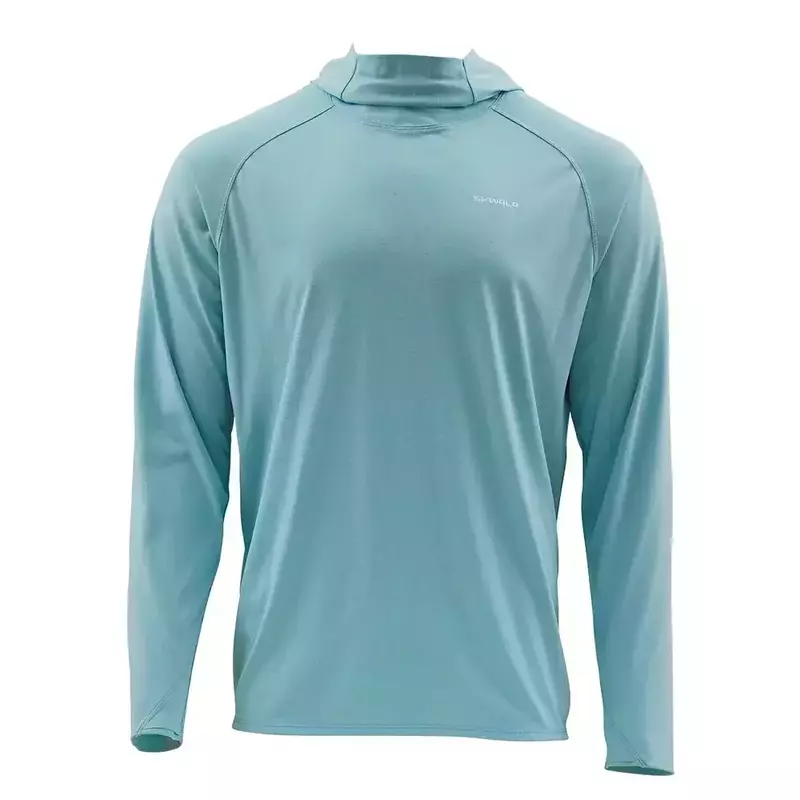Angling Tips For Summer Fly Fishing in Montana
Posted by: Toby Swank
Date: 07/13/2025
The summer heat is here, and there's just a bit of snow left in the mountains yet to make its way to the river bottoms as the summer sun shines bright across the Big Sky country.
Bozeman Fly Fishing Summer Tips
This is the time of year when water temperatures start to rise beyond the normal comfort zone of the state’s wild trout in the afternoon hours. Montana summer days are long, with lots of sunshine for more hours than not. Anglers fishing in Montana can expect to find plenty of fish, provided they adapt to the changing conditions. Typically, hot weather and warm water temperatures occur between late July and early September.
With over two decades of experience outfitting Bozeman, Mt fly fishing trips, the Bozeman Mt fly fishing guides with Fins and Feathers Guide Service are experts at adjusting their tactics when the weather changes. Here are a few key tips to help anglers get the most out of their mid-late summer Montana fly fishing trip.
Go Early
Nothing will ensure a successful Montana fly fishing outing in the summertime more than heading out in the early morning hours. The fish and insects are most active in the morning, so being on the water at this time is paramount to summer angling success in Montana. The earlier, the better, is always the recommendation of our Bozeman fly fishing guides. Beat the heat and crowds while watching an incredible Montana sunrise!
When water temperatures rise into the high 70s, water molecules hold less dissolved oxygen, essential for trout survival. In turn, their metabolism slows down, resulting in longer periods of inactivity. Riffles, pocket water, and fast-moving runs hold the most dissolved oxygen, and trout move into these areas when they are feeding and most active during these times. The savvy angler knows to focus their efforts around these types of water to maximize their success while fly fishing in Montana during the summertime.
Understand the Bugs
Mid-summer hatches become sparse by mid-July on the fly fishing rivers of Montana.
Tricos are about the only consistently hatching insects anglers will encounter throughout late July and August. These small Mayflies emerge in the predawn hours and migrate to the river to mate in towering “clouds” before falling lifeless onto the water’s surface by late morning. Trout feed on these spent spinners with regularity on rivers like the Missouri, East Gallatin, Jefferson, and the lower stretches of the Yellowstone River.
"Midnight Stone" activity is evident along the rocks and boulders near the river’s banks in late July and August. These large golden stones are seldom seen in their adult stages by anglers, but their presence should be noted when they are around as trout key into both the adults and nymphs throughout most of the mid-summer.
Terrestrial insects like grasshoppers, ants, and beetles become increasingly important to trout as hatching insects become sparse through August and into early September. Long drifts with big hopper imitations have long been what many anglers consider the quintessential Montana fly fishing experience. Add a small, weighted dropper that imitates a drowned insect or nymph to more effectively cover various water columns where fish hold while feeding.
Stay Comfortable and Hydrated
A comfortable angler is the best angler. Dress appropriately with long-sleeved tops and pants rather than shorts and t-shirts. Pick lightweight, breathable synthetic fabric blends that feel “airy” and dry quickly. We always go for hooded shirts and a ball cap for sun protection rather than a standard button-up shirt and wide-brimmed hat – it's windy in Montana, and wide-brimmed hats don’t do well in the wind. Drink lots of water and dip your feet in the water every once in a while.
Wrap it Up Early
The best part of starting early is that the angler can be on the water during the most productive hours of the day and get off the water before the peak of the day’s heat. Plan on getting off the water between 1 and 3 pm as the heat can become uncomfortable and the fishing slows down after the sun reaches its highest point in the Big Sky during July and August.
Anglers will hear about “Hoot Owl” fishing restrictions as water temperatures increase and flows start to drop. These ingenious regulations protect our wild trout during the hottest times of the day by minimizing stress from anglers. At the same time, they allow anglers to be on the water when the fish are most active during the typical summer day.
Be sure to check Montana FWP’s website regularly as Hoot Owl restrictions are subject to change with conditions and aren’t always posted at fishing access sites. Essentially, these restrictions limit angling to the hours between midnight and 2 pm when in effect. Regardless of whether or not the restrictions are in place, getting on the water early in the morning and off early in the afternoon is the biggest key to a safe and successful fly fishing outing in Montana during the heat of summer.
Summertime is Montana Fishing Primetime
Summertime is the best time of year to fly fish in Montana, but it is not without challenges. Greet the day early and cover the most productive trout water with relevant flies for the best success. Use heavy tippets, try to land fish quickly using a net, keep them wet, and minimize handling to ensure a safe release of Montana’s wild trout.




